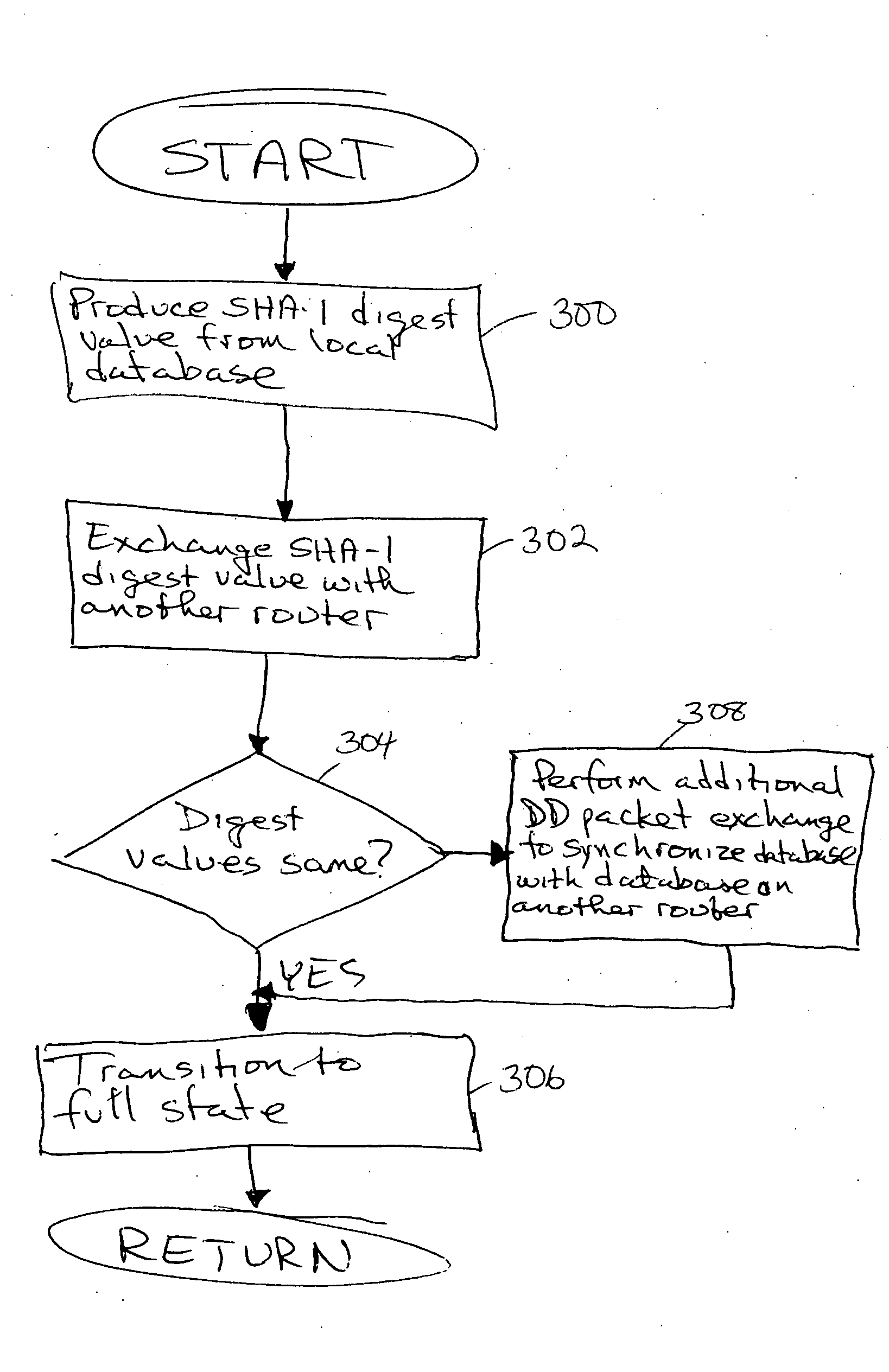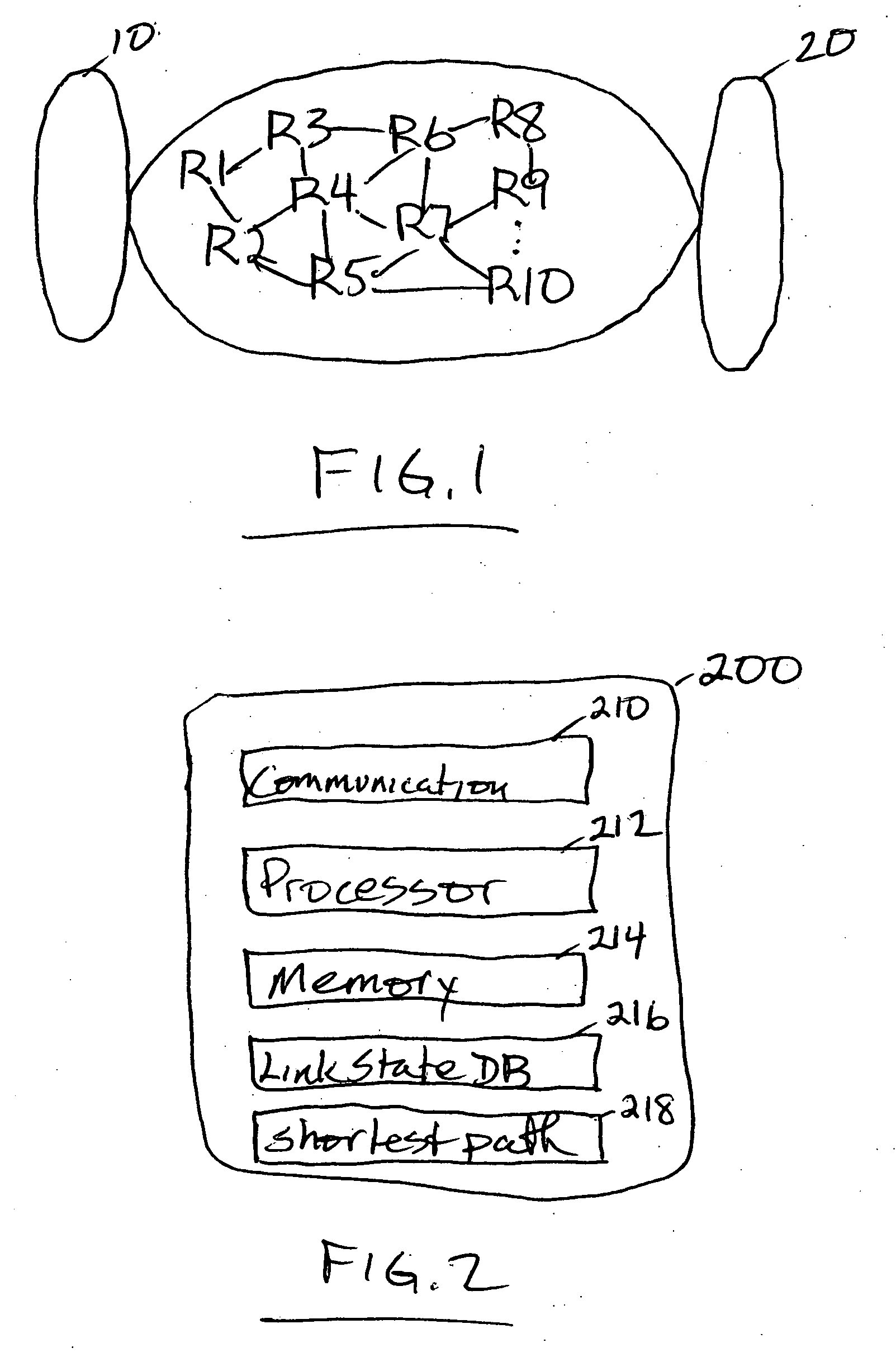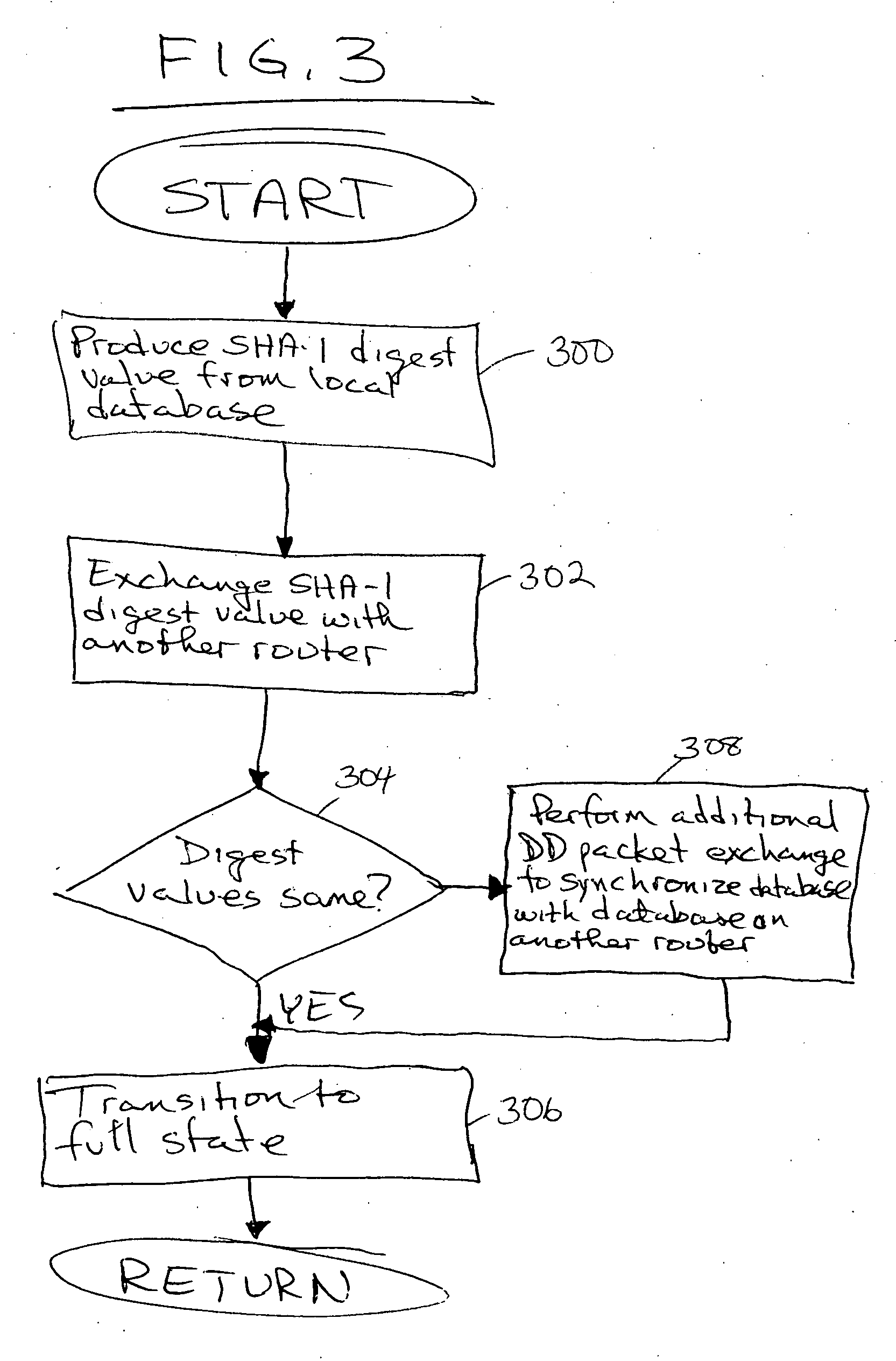Method and apparatus to minimize database exchange in OSPF by using a SHA-1 digest value
a database exchange and digest value technology, applied in the field of packet switched networks, can solve the problems of not always desirable, lost, potentially-usable forwarding paths, time-consuming process,
- Summary
- Abstract
- Description
- Claims
- Application Information
AI Technical Summary
Benefits of technology
Problems solved by technology
Method used
Image
Examples
Embodiment Construction
[0014] Directing attention to FIG. 1, there is shown an exemplary network of routers in accordance with the present invention. Routers R1-RN function to pass traffic in the form of packetized data between points 10, 20. Points 10, 20 can be individual, end user computer systems, local area networks, wider area networks, and may even be separate computer networks containing additional routers, but in each case data packets are sent through at least some of the routers R1-RN between points 10, 20. While FIG. 1 illustrates a network having a specific number of routers R1-RN, it is to be understood that various configurations of routers can be implemented in accordance with the present invention. Such variations include the number of routers included, as well as the communication medium employed between the routers. Routers R1-RN can communicate with each other over wireless media as well as wired media, as can points 10, 20. While FIG. 1 also shows a specific arrangement of communicati...
PUM
 Login to View More
Login to View More Abstract
Description
Claims
Application Information
 Login to View More
Login to View More - R&D
- Intellectual Property
- Life Sciences
- Materials
- Tech Scout
- Unparalleled Data Quality
- Higher Quality Content
- 60% Fewer Hallucinations
Browse by: Latest US Patents, China's latest patents, Technical Efficacy Thesaurus, Application Domain, Technology Topic, Popular Technical Reports.
© 2025 PatSnap. All rights reserved.Legal|Privacy policy|Modern Slavery Act Transparency Statement|Sitemap|About US| Contact US: help@patsnap.com



